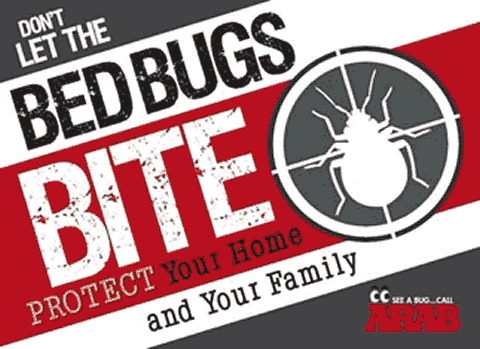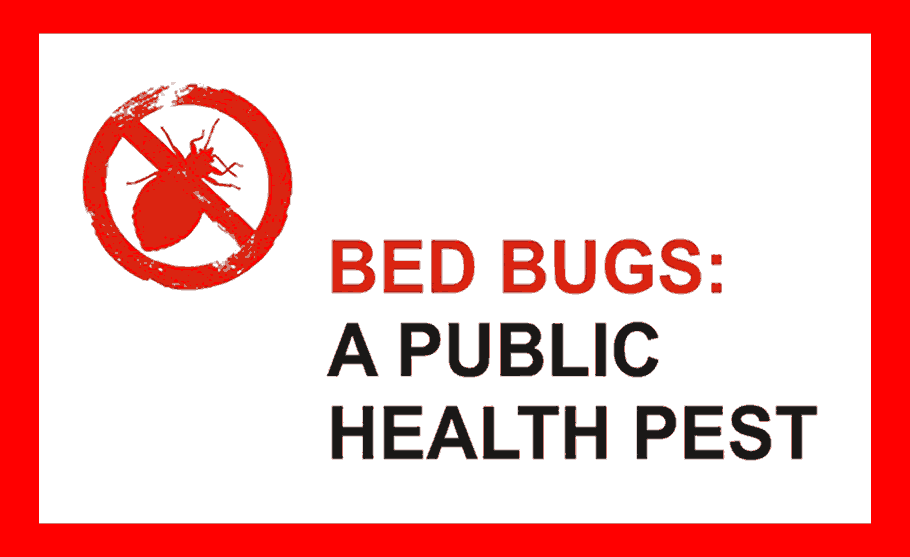Ticks
Information provded by Ohio State University.
Twelve species of ticks are known to occur in Ohio. The brown dog tick, Rhipicephalus sanguineus, is the only species that can become established as a pest in homes and kennels. Three tick species are medically important because they are disease vectors: the American dog tick, Dermacentor variabilis; the lone star tick, Amblyomma americanum; and the blacklegged tick (also commonly called the ‘deer tick’), Ixodes scapularis. The remaining tick species are rarely encountered. All ticks are parasites thatfeed on the blood of animals.
Identification
Not all ticks cause human disease, so it is important to properly identify the tick species when determining dis- ease risk. Many of the species in Ohio, including the three of medical importance, are hard ticks. They are called hard ticks because they possess a scutum (hard plate) on their upper surface just behind the mouthparts. The scutum covers almost the entire upper surface of the adult male whereas it covers only the front portion of the female. Soft ticks lack a scutum. In Ohio, soft ticks are not pests of humans. Tick adults and nymphs have eight legs whereas the larvae (first stage) have six. Adult ticks often have dis- tinct characteristics and markings, but immature stages are completely tan or brown and difficult to identify to species. All stages are round to oval shaped; they are flat- tened prior to obtaining a blood meal. The adult female greatly increases in size after feeding but adult males do not. Nymphs become engorged, but they are much smaller than the adults.
Important Tick Species in OhioBrown Dog Tick (Rhipicephalus sanguineus)
The adult brown dog tick is reddish brown. Unfed adults are about 1/8 inch long. After feeding, the female is much larger (~1/2 inch long), bluish gray, and oval shaped. All stages of the brown dog tick have a pair of small eyes.
Unlike other tick species, the brown dog tick can com- plete its entire life cycle indoors. The brown dog tick is well adapted to survive in the warm, dry conditions inside and outside home environments. These ticks do not thrive in wooded areas. Nonetheless, they may occur in grassy and bushy areas adjacent to homes and kennels, roadsides, and footpaths.
Brown dog ticks rarely attack humans. Rather, dogs are their preferred host. All stages of the brown dog tick feed on dogs and they may attach anywhere on its body.
However, adult ticks typically attach on the dog’s ears and between its toes, whereas larvae (seed ticks) and nymphs typically attach on the dog’s back. After feeding, they drop off the host but do not travel far. Brown dog ticks can com- plete a generation in approximately 60 days with optimal temperatures and readily available dog hosts.
Brown dog ticks can transmit Rocky Mountain spotted fever and several other disease organisms to dogs.
American Dog Tick (Dermacentor variabilis)
The adult American dog tick is brown with light grey mottling on the upper surface. The unfed adult female is about 3/16 inches long. After feeding, she is much larger (~5/8 inches long), mostly gray, and oval shaped. The male, whether fed or unfed, is ~1/8 inch long. All stages of the American dog tick have a pair of very small eyes.
American dog ticks occur primarily in overgrown va- cant lots, fallow farm fields, weedy roadsides, and edges of paths and hiking trails. The immature stages of this species feed on rodents and other small mammals. Unfed larvae and nymphs crawl about actively seeking a host. Af- ter feeding, larvae and nymphs drop to the ground where they seek shelter and digest the blood meal before molting (shedding the skin).
Adults of the American dog tick are most abundant from mid-April to mid-July. Adult ticks feed on a wide variety of medium to large size mammals, such as raccoons, ground hogs, opossum, dogs, and humans. The adult tick waits on grass and weeds for a suitable host to brush against the vegetation. It then clings to the fur or clothing and crawls upward seeking a place to attach and feed.
Various stages of the American dog tick: larva, nymph, adult female, adult male (counterclockwise from upper right; sesame seed shown for size comparison).
The adult male obtains a brief blood meal then mates with the female on the host. The adult female feeds for 7 to 10 days then she drops to the ground and remains there for several days before laying several thousand eggs. The female dies shortly thereafter. The male remains on the host and continues to feed and mate for the rest of the season until his death.
American dog ticks are the primary transmitter of Rocky Mountain spotted fever. They also may transmit tularemia. The bite of the American dog tick also may cause tick paralysis in dogs and humans.
Lone Star Tick (Amblyomma americanum)
The unfed adult female is about 1/8 inch long, brown, with a distinctive silvery spot on the upper surface (hence the name ‘lone star’). Once fed, the female is almost circu- lar in shape and ~7/16 inch long. The male tick is about 1/8 inch long, brown, with whitish marking along the rear edge. All stages have a pair of small eyes.
Lone star ticks are common in the southern half of Ohio. All stages can be found throughout the warm months of the year. This species typically occurs in shady locations along roadsides and meadows and near the edg- es of wooded areas. All stages crawl to the tip of low grow- ing vegetation and wait for a host to pass by. All stages feed on a variety of bird and mammal hosts, including humans.
Lone star ticks are the primary transmitter of human monocytic ehrlichiosis (anaplasmosis). They also may transmit tularemia and Q-fever. This species is a minor vector of Rocky Mountain spotted fever.
Various stages of the lone star tick: nymph, adult female, adult male (counterclockwise from upper right; sesame seed for size comparison).
Blacklegged Tick (Ixodes scapularis)
The larval stage of the blacklegged tick is about the size of a poppy seed and nearly translucent, which makes it extremely difficult to see. The nymphal stage is translucent to slightly gray or brown. Adult males are ~1/16 inch long; unfed females are larger (~1/8 inch long). Both sexes are a dark chocolate brown color, but the rear half of the adult female is red or orange. When fed, they may appear gray. All stages lack eyes.
Blacklegged ticks are found mostly in or near forested areas. The immature stages of this species feed on birds, rodents (mice, voles, chipmunks, squirrels, etc.) and other small to medium size mammals such as dogs, raccoons, opossum, etc. Adult blacklegged ticks feed on large mam- mals, most commonly white-tailed deer. Hence, some peo- ple call them ‘deer ticks’. All stages may attach to humans. The blacklegged tick (Ixodes scapularis), the principal vector of Lyme disease, is rare in Ohio. The most com- monly encountered Ixodes tick in Ohio is the groundhog tick, Ixodes cookei, which does not transmit Lyme disease. There are many other Ixodes ticks in the United States and only an expert can identify them to species.
In addition to transmitting Lyme disease, blacklegged ticks are the principal vectors of babesiosis and human granulocytic ehrlichiosis. This tick species may be co- infected with several disease agents.
Various stages of the blacklegged tick: nymph, adult female, adult male (counterclockwise from upper right; sesame seed for size comparison).
Injury
Tick feeding often results in inflammation, swelling, irritation, and the potential for secondary bacterial infec- tion at the feeding site. When dogs are heavily infested, excessive blood loss can result in death. The risk of infection by tick-borne disease agents is of primary concern. Humans and dogs can become infected with causal agents of Rocky Mountain spotted fever, Lyme disease, ehrlichiosis, tularemia, and babesiosis among oth- ers. If you experience fever or flu-like symptoms follow- ing a tick bite, immediately contact your physician. It is important to receive the appropriate antibiotics as soon as possible.
Dogs that become infected with a tick-borne disease may become lethargic and anemic; they may quit eating and lose weight; in some cases, they may become lame. A dog with such symptoms should be examined by a veteri- narian.
Rocky Mountain Spotted Fever
American dog ticks are the primary transmitter of Rocky Mountain spotted fever, which is one of the most common tick-transmitted diseases in Ohio. Symptoms of Rocky Mountain spotted fever appear 3 to 12 days after tick feeding and typically include sudden high fever, head- ache, and aching muscles. On the second or third day of the fever, a non-itchy rash may develop on the wrists and ankles. The rash soon spreads to other parts of the body including the torso, palms, and soles. This disease rapidly progresses and can cause death if not treated with the ap- propriate antibiotics. Most fatalities can be attributed to a delay in seeking medical attention. Early treatment of spotted fever typically results in rapid recovery.
Lyme Disease
Lyme disease is the most prevalent tick-borne disease of humans in the United States with approximately 10,000 cases reported annually. This bacterial disease is named after Lyme, Connecticut, where cases were first reported in 1975. The nymphal stage of the blacklegged tick is usually responsible for transmitting Lyme disease to humans.
Blacklegged ticks are very rare in Ohio, and the Lyme disease bacterium, Borrelia burgdorferi, has never been iso- lated or identified from any animals or ticks in the state. Nevertheless, 40 to 80 cases of Lyme disease occur annu- ally in Ohio. Some of these cases can be tracked as being acquired out-of-state. However, it is possible that infected nymphs are transported on migratory birds, or black- legged tick populations may be too low to be detected via current surveillance efforts, although many hundreds of animals have been tested in Ohio.
Be alert for a red, ring-like rash developing at the site of a tick bite within 2 to 32 days, because this ring-rash is diagnostic for Lyme disease. Note, however, that ~40% of infected humans do not develop a ring-rash. Fever, head-ache, fatigue, or joint pain also may be symptoms of Lyme disease. Immediate antibiotic therapy for Lyme disease reduces the risk of neurological, arthritic, or cardiac complications developing days to years later.
Contact Us ~ We can help!
Hours of operation: Monday through Friday 7:30 A.M. to 4:00 P.M. EST
Arab Pest Control, a division of Lewellen Services, Inc.
232 West Main St., Logan, OH 43138
800-654-8870
![]()
![]()


![]()
Serving Central And Southeastern Ohio Since 1980 • Family Owned And Operated• Fully Licensed By The State And Bonded And Insured. • Termite Warranties • Licensed Technicians • Extensive Training and Retraining• Uniformed Technicians• Marked Vehicles• All Pest Services Offered• Able To Tailor Services To Fit Your Needs• Convenient Hours• Polite And Courteous Staff • We Use The Up To Date Chemicals And Treatment Methods To Protect Your Family And Pets • Many Treatment Services Offered• Senior Citizen Discounts





